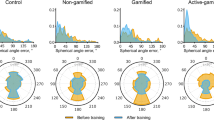Abstract
Many artists produce and mix their virtual reality, game, or screen media audio productions only with headphones, but deploy them to stereo or multi-channel loudspeaker setups. Because of the acoustical and perceptual differences, listening on headphones might sound very different compared to loudspeakers, including the perception of sound sources inside the head (externalisation problem). Nevertheless, by using Head Related Transfer Functions (HRTFs) and accurate movement tracking, it is possible to simulate a loudspeaker setup with proper externalisation. In this paper, an infrared-based positional tracking system with non-individualised HRTFs to simulate a loudspeaker setup is conceptualised, designed and implemented. The system can track the user with six degrees of freedom (6-DOF); an improvement over current commercial systems that only use 3-DOF tracking. The system was evaluated on 20 participants to see if the additional DOF increased the degree of externalisation. While tracking increased the externalisation in general, there was no significant difference between 3-DOF and 6-DOF. Another test indicated that positional movement coupled with positional tracking may have a greater effect on externalisation compared to positional movement coupled with only head movement tracking. Comparisons between these results and previous studies are discussed and improvements for future experiments are proposed.
Access this chapter
Tax calculation will be finalised at checkout
Purchases are for personal use only
Similar content being viewed by others
Notes
- 1.
All of the logged data can be downloaded and reviewed from here https://bit.ly/2Ma1bOB.
- 2.
A full review of all results including demographics, reported externalisation and SUS scores can be found on https://bit.ly/2I0jUXG.
References
Cycling ’74 max 8, April 2019. https://cycling74.com/
Nx - 3D audio on any headpones|by Waves Audio Ltd., February 2019. https://www.waves.com/nx
Andersen, J.H.: FFT-based binaural panner, May 2019. https://cycling74.com/tools/fft-based-binaural-panner
Begault, D., Wenzel, E.: Direct comparison of the impact of head tracking, reverberation, and individualized head-related transfer functions on the spatial perception of a virtual speech source. In: Proceedings 108th AES Convention, October 2001, pp. 904–916 (2001)
Betbeder, L.: Near-field 3D audio explained|Oculus, September 2017. https://developer.oculus.com/blog/near-field-3d-audio-explained/
Blauert, J.: The Technology of Binaural Listening. Springer, Heidelberg (2013). https://doi.org/10.1007/978-3-642-37762-4
Brimijoin, W.O., Boyd, A.W., Akeroyd, M.A.: The contribution of head movement to the externalization and internalization of sounds. PLoS ONE 8, e83068 (2013). https://doi.org/10.1371/journal.pone.0083068
Farnell, A.: Designing Sound. MIT Press, Cambridge (2010)
Fluitt, K.F., Mermagen, T., Letowski, T.: Auditory perception in open field: distance estimation. Tech. rep. Army Research Lab, Aberdeen, Scotland, UK (2013)
Georgiou, P.G., Mouchtaris, A., Roumeliotis, S.I., Kyriakakis, C.: Immersive sound rendering using laser-based tracking. In: Audio Engineering Society Convention 109. Audio Engineering Society (2000)
Geronazzo, M., Spagnol, S., Bedin, A., Avanzini, F.: Enhancing vertical localization with image-guided selection of non-individual head-related transfer functions. In: Proceedings of IEEE International Conference on Acoustics, Speech and Signal Processing (ICASSP), pp. 4463–4467 (2014). https://doi.org/10.1109/ICASSP.2014.6854446
Halik, S.: Accela in opentrack 2.3, May 2019. https://github.com/opentrack/opentrack/wiki/Accela-in-opentrack-2.3
Hendrickx, E., Stitt, P., Messonnier, J.C., Lyzwa, J.M., Katz, B.F., de Boishéraud, C.: Influence of head tracking on the externalization of speech stimuli for non-individualized binaural synthesis. J. Acoustical Soc. Am. (JASA) 141, 2011 (2017). https://doi.org/10.1121/1.4978612
Jianjun, H., Tan, E.L., Gan, W.S., et al.: Natural sound rendering for headphones: integration of signal processing techniques. IEEE Signal Process. Mag. 32(2), 100–113 (2015)
Kickstarter: OSSIC X: The first 3D audio headphones calibrated to you by OSSIC, may 2019. https://www.kickstarter.com/projects/248983394/ossic-x-the-first-3d-audio-headphones-calibrated-t
Lee, K.S., Lee, S.P.: A real-time audio system for adjusting the sweet spot to the listener’s position. IEEE Trans. Consum. Electron. 56, 835–843 (2010). https://doi.org/10.1109/TCE.2010.5506009
Møller, H., Sørensen, M.F., Jensen, C.B., Hammershøi, D.: Binaural technique: do we need individual recordings? J. Audio Eng. Soc. 44(6), 451–469 (1996). http://www.aes.org/e-lib/browse.cfm?elib=7897
Oculus: Localization and the human auditory system, May 2019. https://developer.oculus.com/documentation/audiosdk/latest/concepts/audio-intro-localization
Skov, K.: Binaural spatialization in Ableton, February 2019. http://kasperskov.dk/projects_binaural_jit.html
Wenzel, E.M., Arruda, M., Kistler, D.J., Wightman, F.L.: Localization using nonindividualized head-related transfer functions. J. Acoust. Soc. Am. (JASA) 94, 111–123 (1993). https://doi.org/10.1121/1.407089
Author information
Authors and Affiliations
Corresponding author
Editor information
Editors and Affiliations
Rights and permissions
Copyright information
© 2020 ICST Institute for Computer Sciences, Social Informatics and Telecommunications Engineering
About this paper
Cite this paper
Eklund, R., Erkut, C. (2020). A Positional Infrared Tracking System Using Non-individualised HRTFs to Simulate a Loudspeaker Setup and Its Influence on Externalisation of Music. In: Brooks, A., Brooks, E. (eds) Interactivity, Game Creation, Design, Learning, and Innovation. ArtsIT DLI 2019 2019. Lecture Notes of the Institute for Computer Sciences, Social Informatics and Telecommunications Engineering, vol 328. Springer, Cham. https://doi.org/10.1007/978-3-030-53294-9_11
Download citation
DOI: https://doi.org/10.1007/978-3-030-53294-9_11
Published:
Publisher Name: Springer, Cham
Print ISBN: 978-3-030-53293-2
Online ISBN: 978-3-030-53294-9
eBook Packages: Computer ScienceComputer Science (R0)




